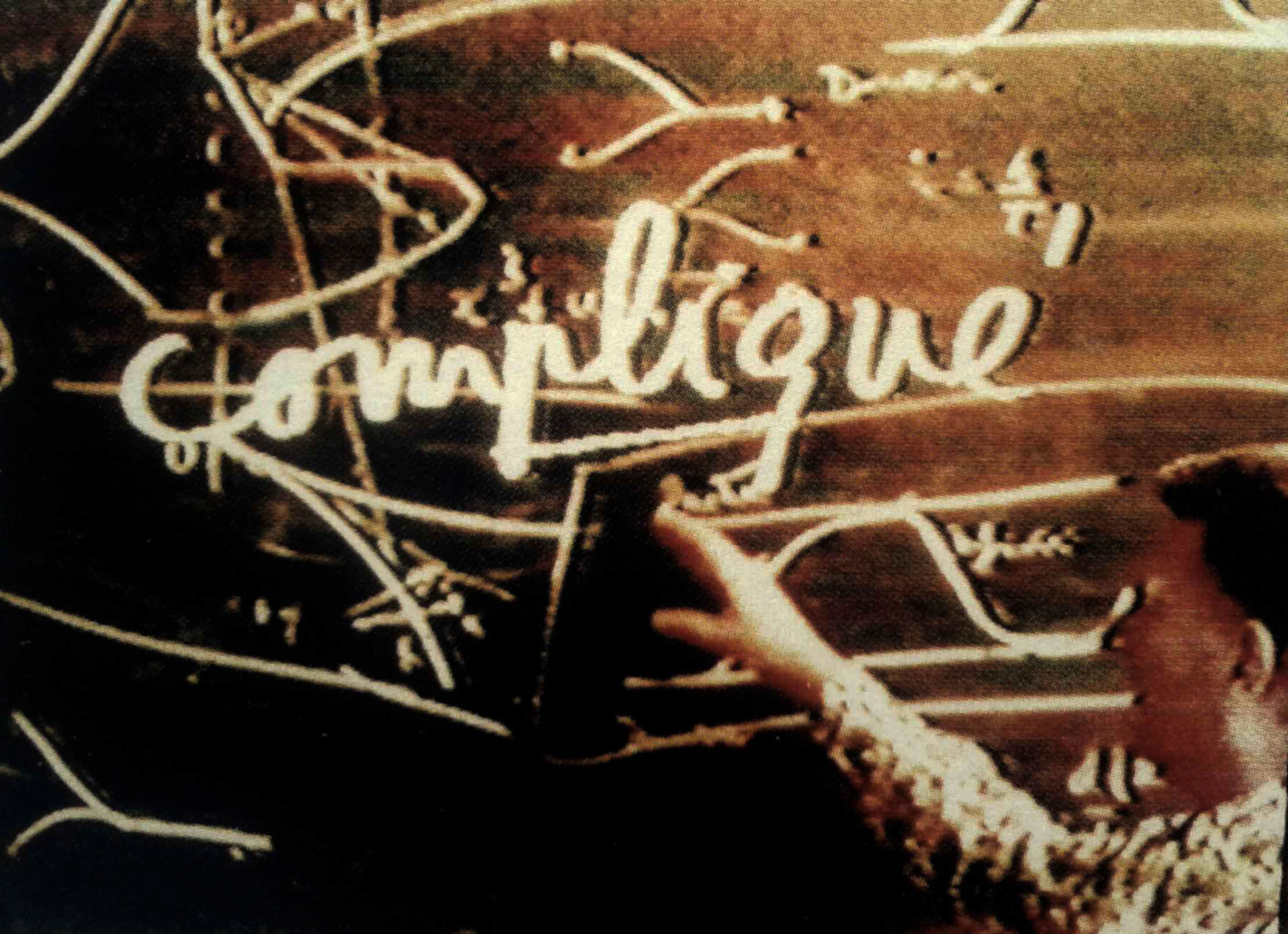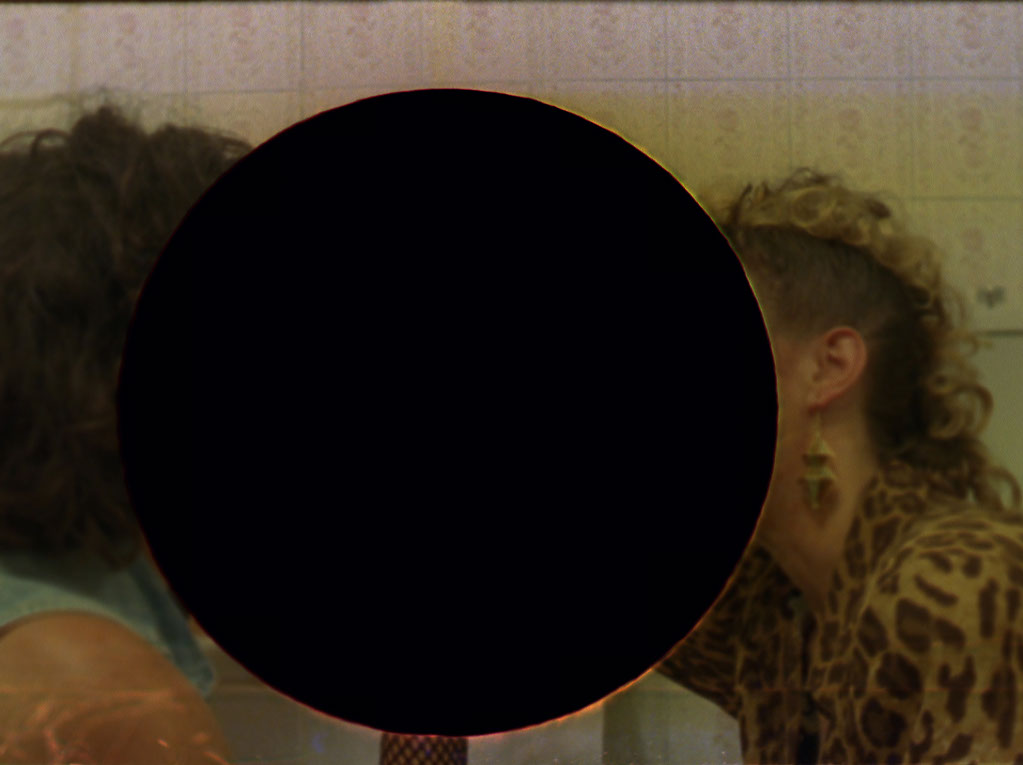
By Serge Daney
Originally published as part of the poll ‘Les films marquants de la décennie (1970-1980)’, in Cahiers du cinéma nr. 308, February 1980
* Tristana, Dodeskaden, Parade
* Ici et Ailleurs, Milestones, Einleitung zu Arnold Schoenberg’s Begleitmusik zu einer Lichspielszene
* Im Lauf der Zeit, Boy, Des journées entières dans les arbres
* Salò
* Six fois deux / sur et sous la communication, Hitler, ein Film aus Deutschland, La Région centrale
1. The childish pleasure of lists… let’s give in to it. And right away it’s to note that it has been the years 1960-1970 that have been rich, adventurous, generous. And not only in cinema. For these fifteen films of the poor seventies, there must have been fifty in the vibrant sixties. Has cinema become less great? So we whisper.
2. NB Scripta manent, filma incubant. Films only exist in our memory. One should make distinctions: those we declare decisive and those we forget quickly, those we thought we didn’t like because we loved them, those who follow their path in silence, neither reviewed nor well-known, those we think of with tenderness (like we do with people), those we love because we love those who love them (and vice versa), those we almost overlooked, those of which we suspect that we have definitely overlooked them etc.
3. Twelve films plus one, stil unclassifiable, PPP’s Salò. Four times three films. An appearance of logic.
4. First of all, three films at the end of a rich career, made by “great filmmakers” but without anything testamentary or academic about them. Films of men who are free – and playful. Buñuel’s play with the logic of narrativity, Tati’s play with the dissolution of narrativity subjected to the video effect.
5. Three political, leftist (radical and puritan) films, of a decade that hasn’t stopped burying its bodies and coming back from everything. Three films questioning cinema on its political effects. Propaganda (Godard), militancy (Kramer), commitment (Straub). At Cahiers, these films were often fellow travelers, or even like apples for the thirst (but an Arab saying suggests that if it’s a good thing to keep an apple for the thirst, one also has to keep a tooth for the apple…)
6. Three nostalgic films, moving forward while turning backward, eyes turned toward the trodden path, the lost childhood – ours, that of cinema. Three films about space, borders lost territories: empires (Oshima, Wenders), colonies (Duras, creole filmmaker).
7. Three previews, three “flashes” of tomorrow, of what may become of our relation to filmed bodies in the postmodern era (multiplication of media and formats). This body, viewed from too close up (Godard, once more), manipulated (Syberberg), missing (Snow).
Commentaries (in bulk)
8. All these films come from five or six countries. No new “national” cinemas in sight. The heroes of the 1960’s (those poor countries called “third world”) is the great stagnant of the 1960’s. Unequal exchange: the poor countries are also poor in images of themselves.
9. Almost all of the films have had a difficult production, marginal, often paradoxical. This wouldn’t have been the case ten years before (a film as difficult as L’Eclisse was produced in a normal way). We are witnessing an usure of the cinema machine, of the industry’s flight forward, at least there were it still exists, of the disappearance of series (A, B, C, etc.). Consequence: a cinema of prototypes that is not followed up, of “coups” that are not renewable: this the frame in which no experience whatsoever (and even no “métier”) is accumulated.
10. Event of the late seventies: the discovery of Ozu (who died in 1963). We seem to understand something of Ozu, but the cinema machine that has allowed Ozu to work on the same themes for forty years, like a painter, with a popular audience, is behind us. Of which we take note.
11. The crisis of cinema, leitmotiv (as well) of the seventies is always that of the industry. The role of modern cinema (from Rossellini to Godard, from Bresson to resnais) has been to contest – from the inside – a classical model that was supposedly in good health. Today, from all over, resounds a plaintive and embittered cry, nostalgic and vindictive: what have we done with our play toy? Have we broken it? And accusing the Nouvelle Vague of having killed cinema…
12. Does the cinema machine reproduce itself from above or from below? Born on the bottom of the social ladder, cinema has soared: it is gentrified. Film has become a cultural value destined to circulate (the establishment of an industry and mass cultural networks is the big event of the decade) and to be rated. Consequence: framing films by way of discourse and alignement of this discours with that who dominates it: advertising; inadequacy of old specialized magazines (the Cahiers being one of them) who don’t know anymore how to carry out a work which seems to be no longer necessary (waging, judging, selecting). Image of this crisis of criticism: the slew of stars and the rare white squares each week in Pariscope.
13. American vitality. The machine has been able to reproduce itself from below, by way of television and series Z (let’s not forget: Coppola started to work for Corman) and from above (by way of hyper-spectacle and technology).
14. In France, these are the years of advance on revenue + Gaumont. Decline of the idea itself of “production”. We want to save cinema “through the top”, with prestige, culture, authors. Mistake: this leads to the weak Don Giovanni. Pyrrhus victory of the old “politique des auteurs” of the yellow Cahiers: a myriad of young filmmakers – less and less young however – who have only their title as “author” – more or less assisted – as consolation price. Television doesn’t seem to have played its role in the reproduction of the machine. No “factory of filmmakers”, no collective movement.
15. End of the 1970’s; the amateurs of cinema mainly recognize themselves in Woody Allen’s Manhattan. Young, urban, educated audience, who suddenly accept to recognise themselves on the screen. Logic of the sociologist. The cinephile becomes a probable comical type.
16. The films of the Nouvelles littéraires type are not bad: they take note of a certain gentrification of taste; In the disposal of embarrassing films, it’s the Positif-taste that wins.
17. For the first time, cinema enters a decade without discourse, without strategy, without flight of prophesy. We are wrong to take this half-heartedness for wisdom. Filmmakers have always had ideas (more or less crazy) on cinema and its future, on the transformation of forms etc.
18. Today the voice of those who continue to think that cinema “is the art of our times” carries less.
——————————————————————————————————————————————————————-
Here’s Pascal Bonitzer’s response to the same poll, as found online (edited):
(in no order)
Man of Marble, Perceval le Gallois, Le Diable probablement, Ludwig – Requiem for a Virgin King, The Passenger, Moses und Aron, New York New York, India Song, Conversation Piece, Star Wars, The Hypothesis of the Stolen Painting.
Note:
One will notice how there are actually eleven films in this list. It is to underline the restrictiveness of this list. A visceral and quasi-inevitable “politique des auteurs” dominates it, and at the same time a futile worry for a distributive justice: I could have easily included Perceval as well as La Marquise d’O…, Le Diable as well as Lancelot du Lac etc., but one had to choose one film per author, to not exclude the others, or to transform this list of ten best films into a list of ten best auteurs. On the other hand, I need to confess, to my shame, of not having seen, for diverse reasons but always bad ones, some films that I believe would be at the top: like American Graffiti (and for this reason I’m including Star Wars), Alice Doesn’t Live Here Anymore, L’Innocente (same thing here so that is why I included New York, New York – which could easily have been replaced by Mean Streets – and Conversation Piece). Finally, there are some films of which I’m surprised myself not to have included on this list, like Amacord, Monsieur Klein, The Other, La Maman et la putain, In the Realm of the Senses, Ici et ailleurs, Ill-Fated Love, Tristana, Nathalie Granger, Apocalypse Now or The Deer Hunter, but that’s just how it is.
